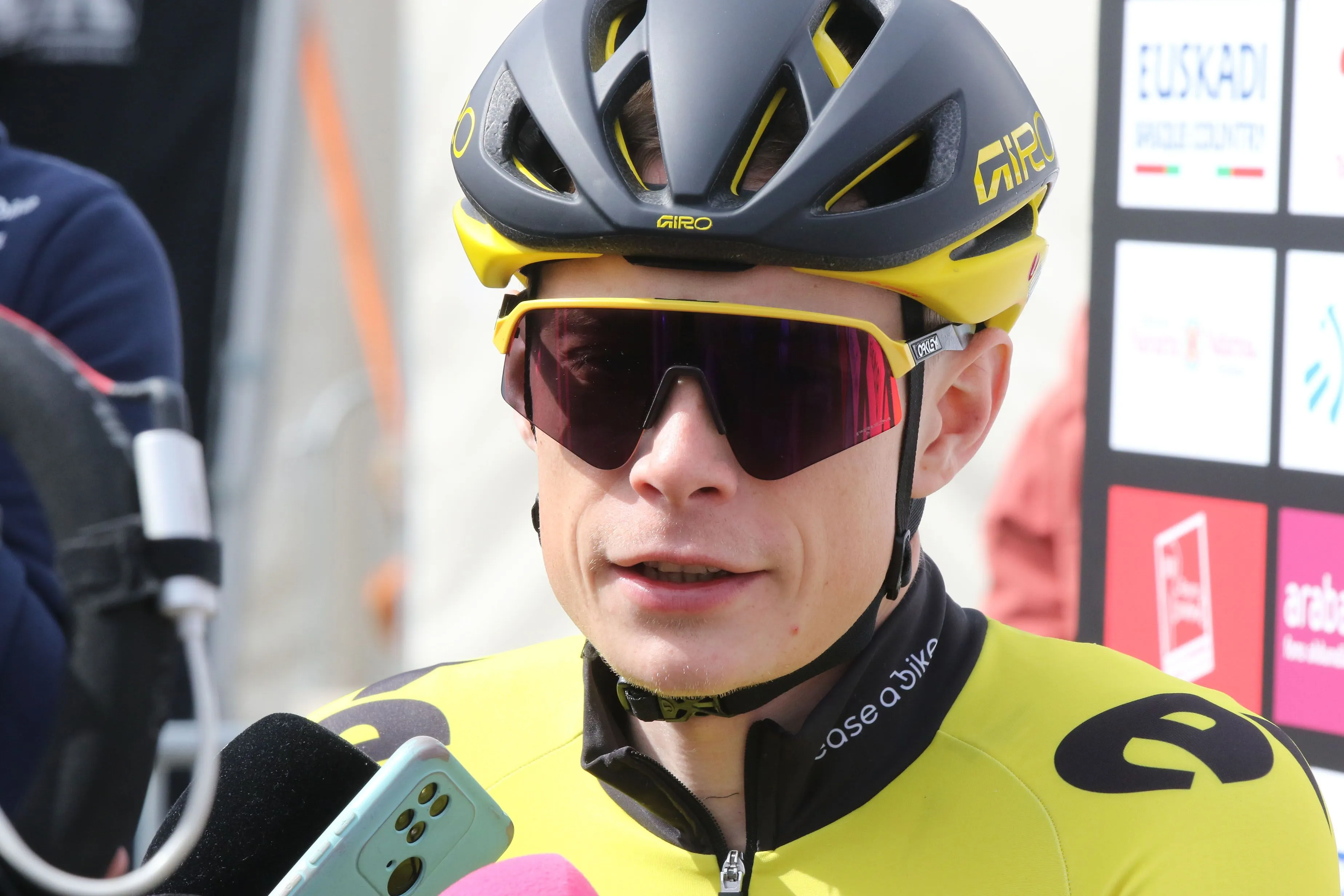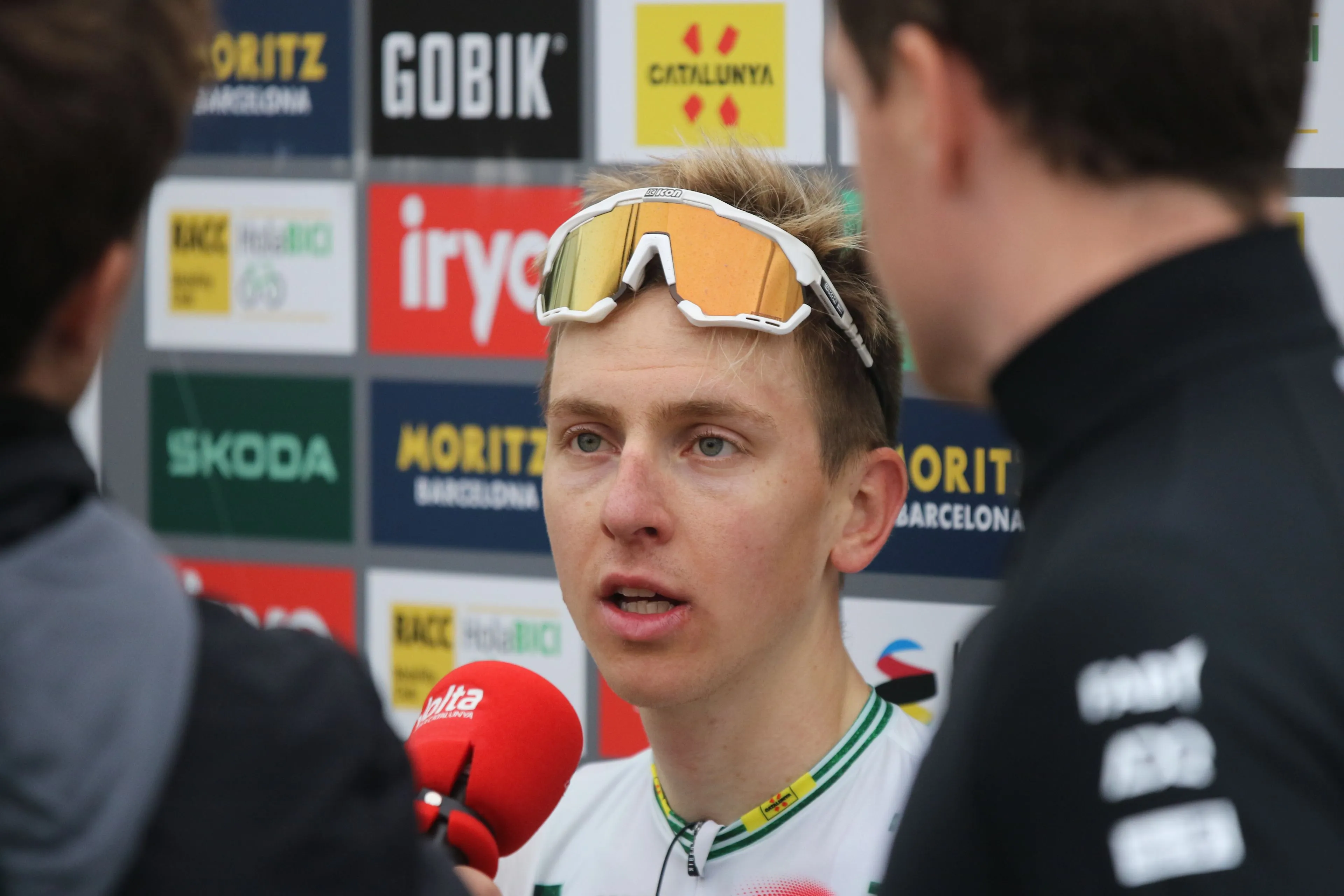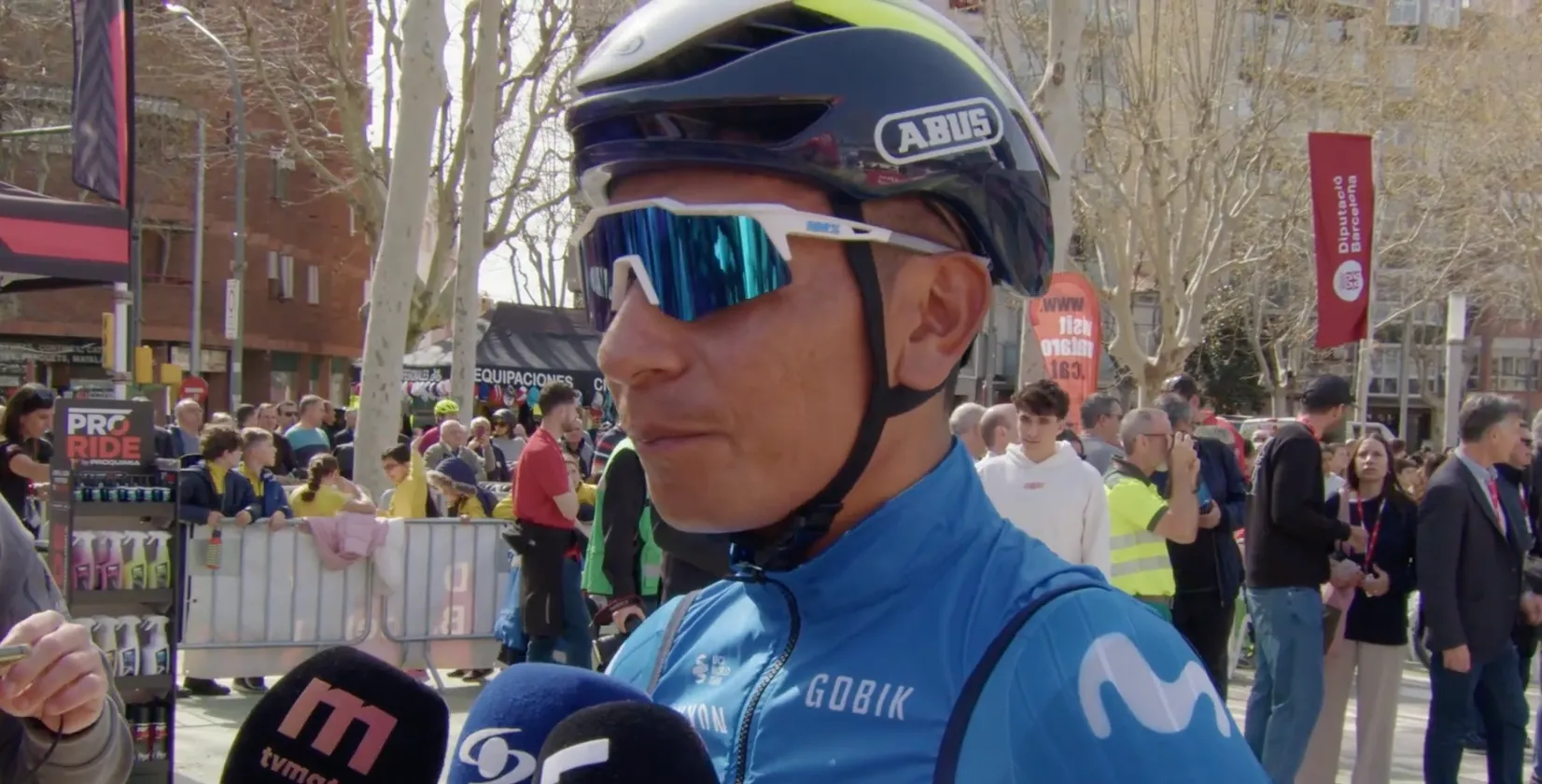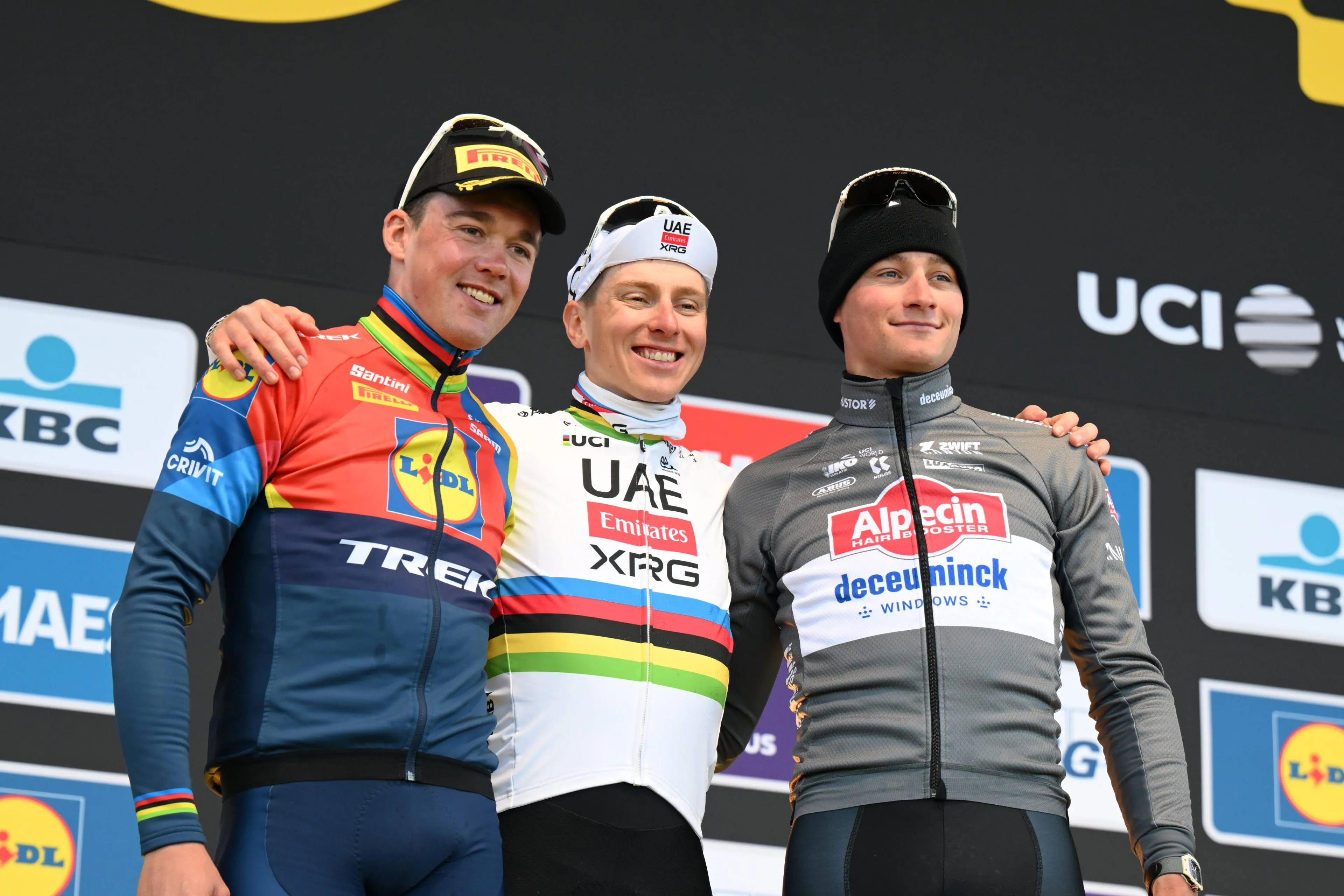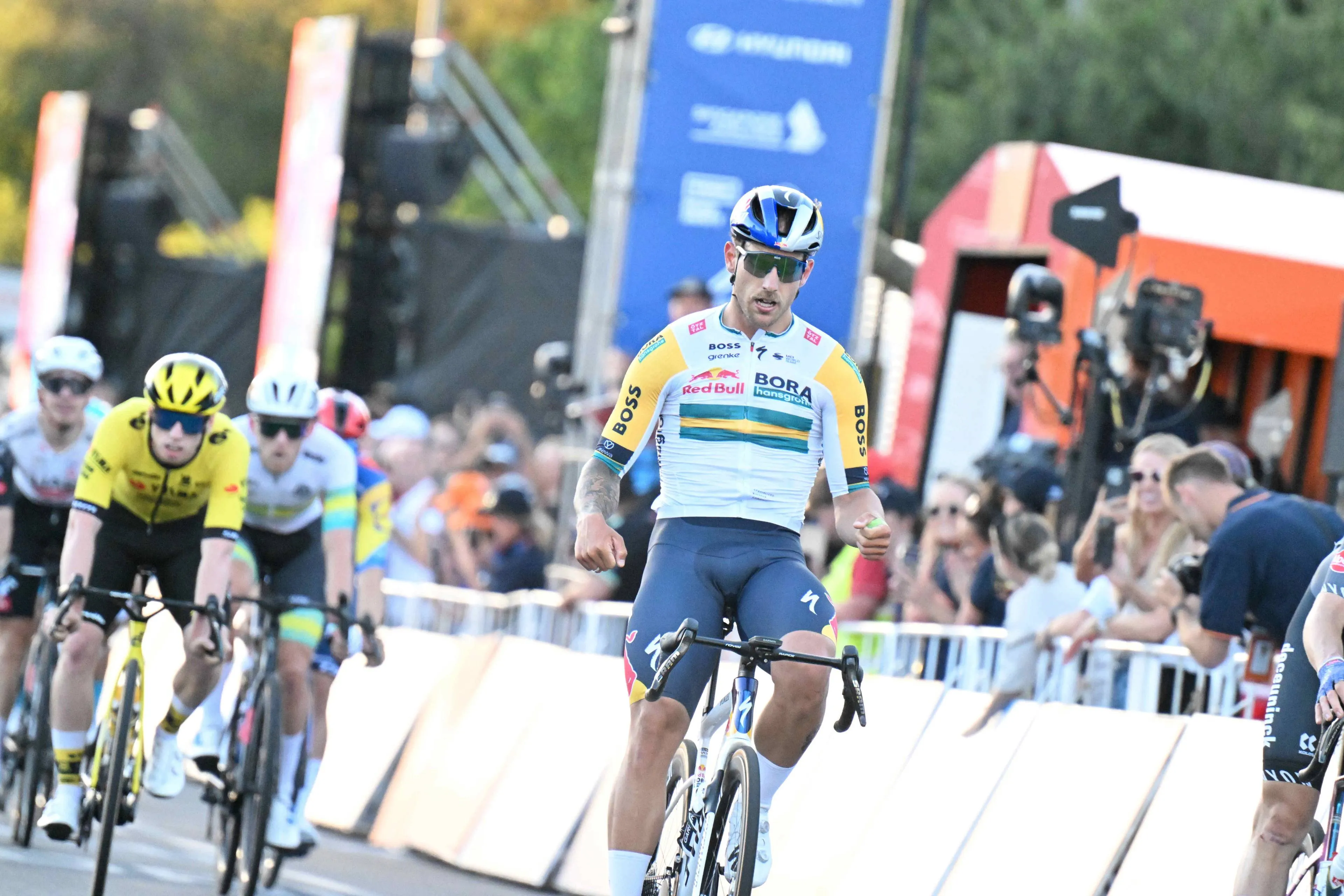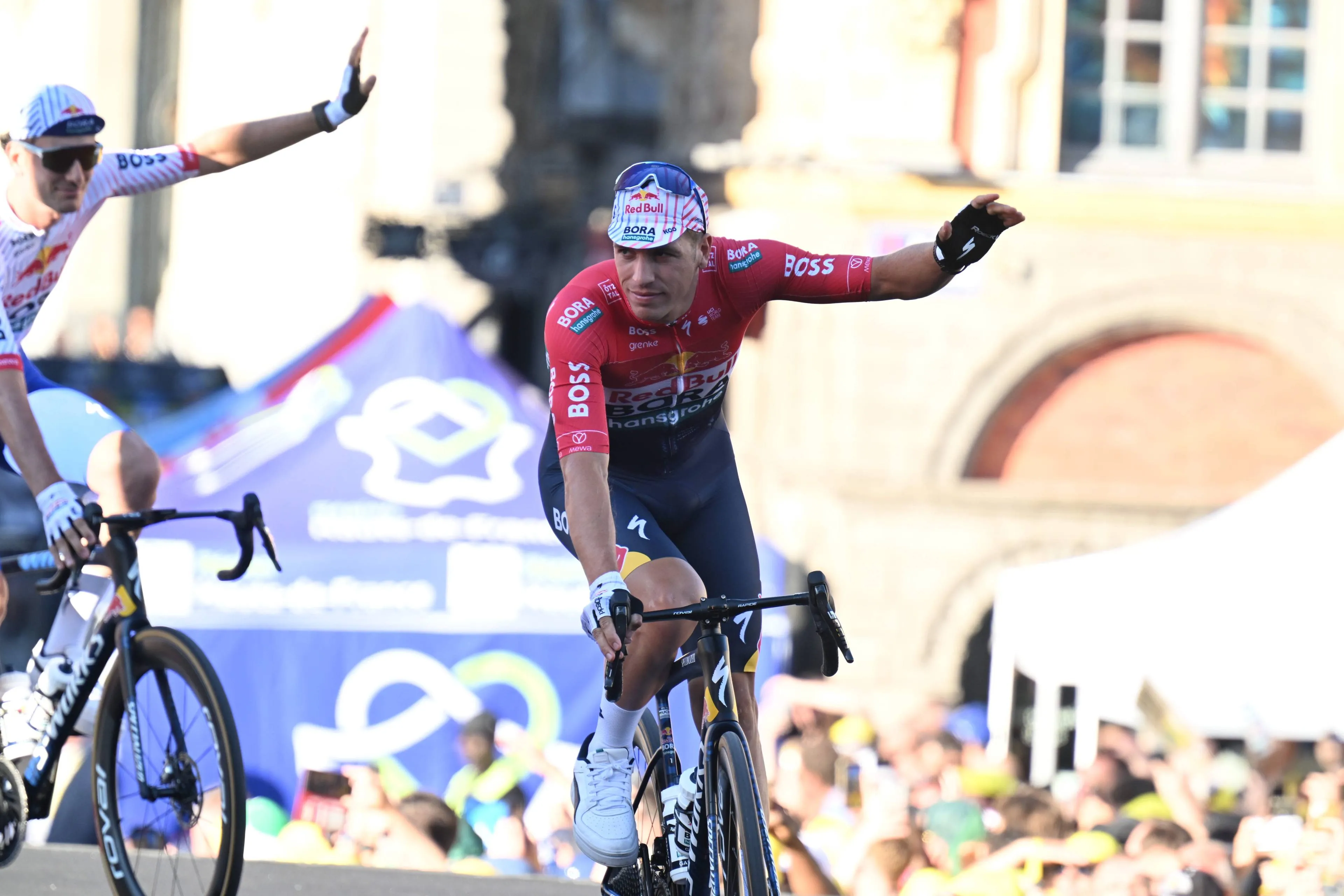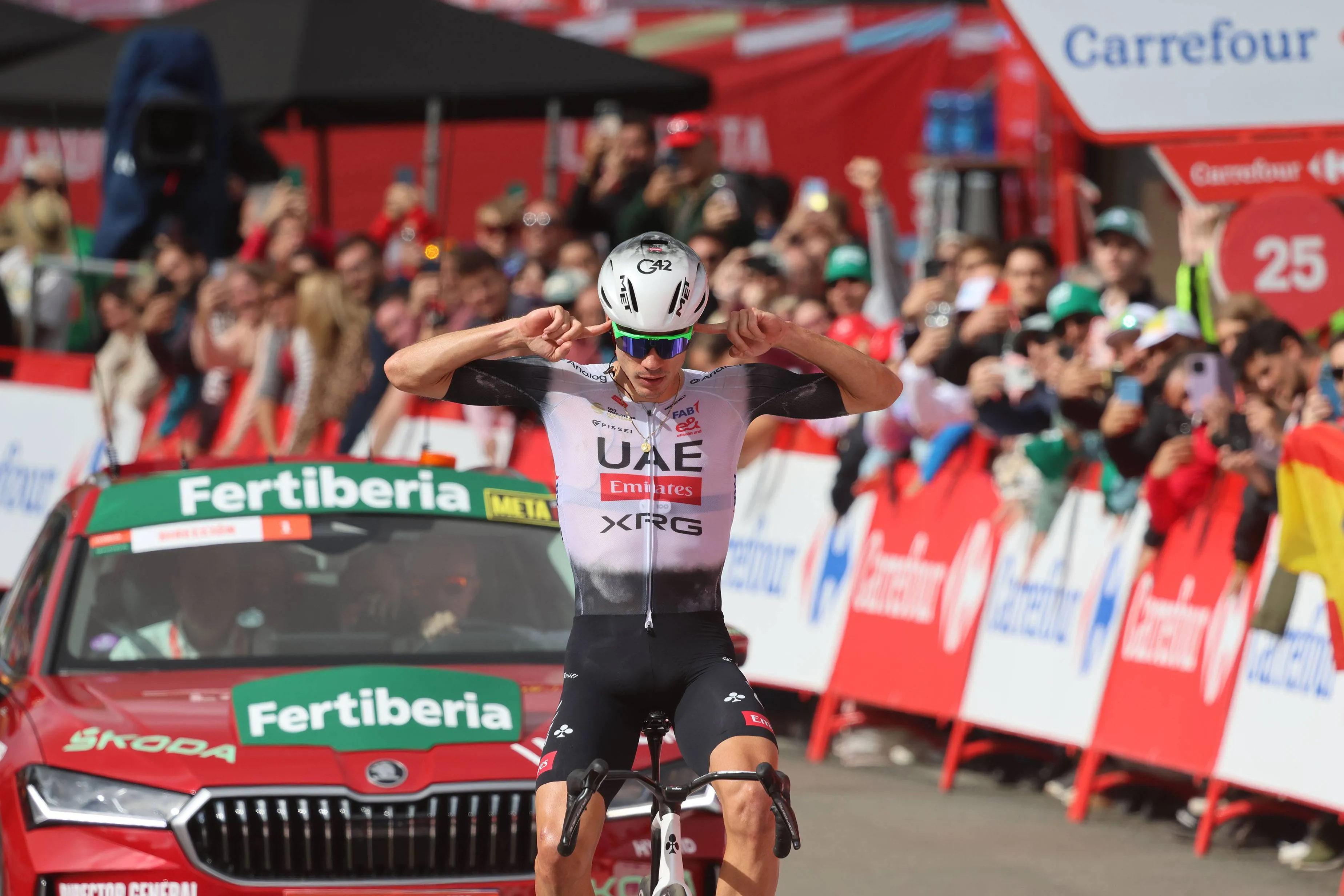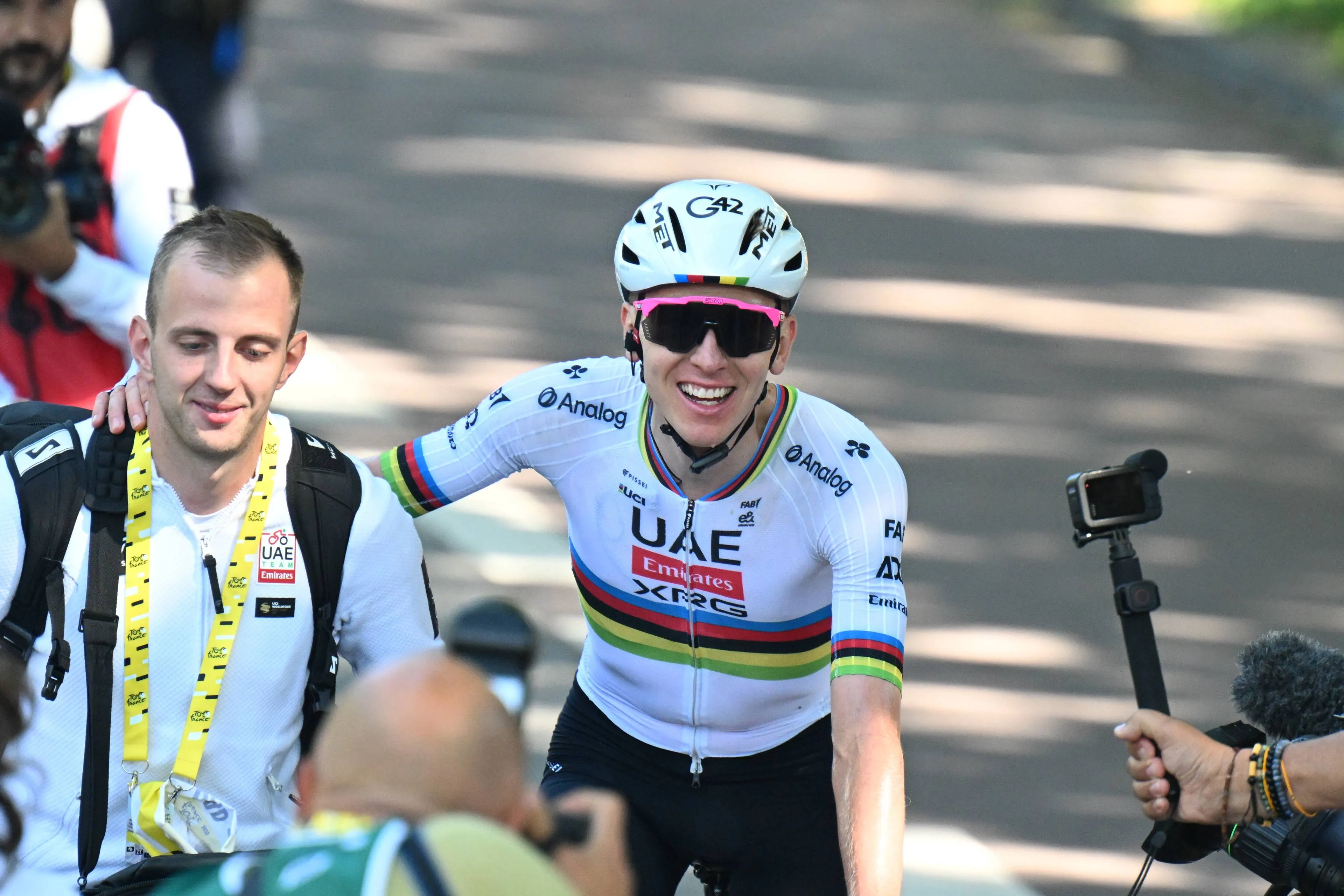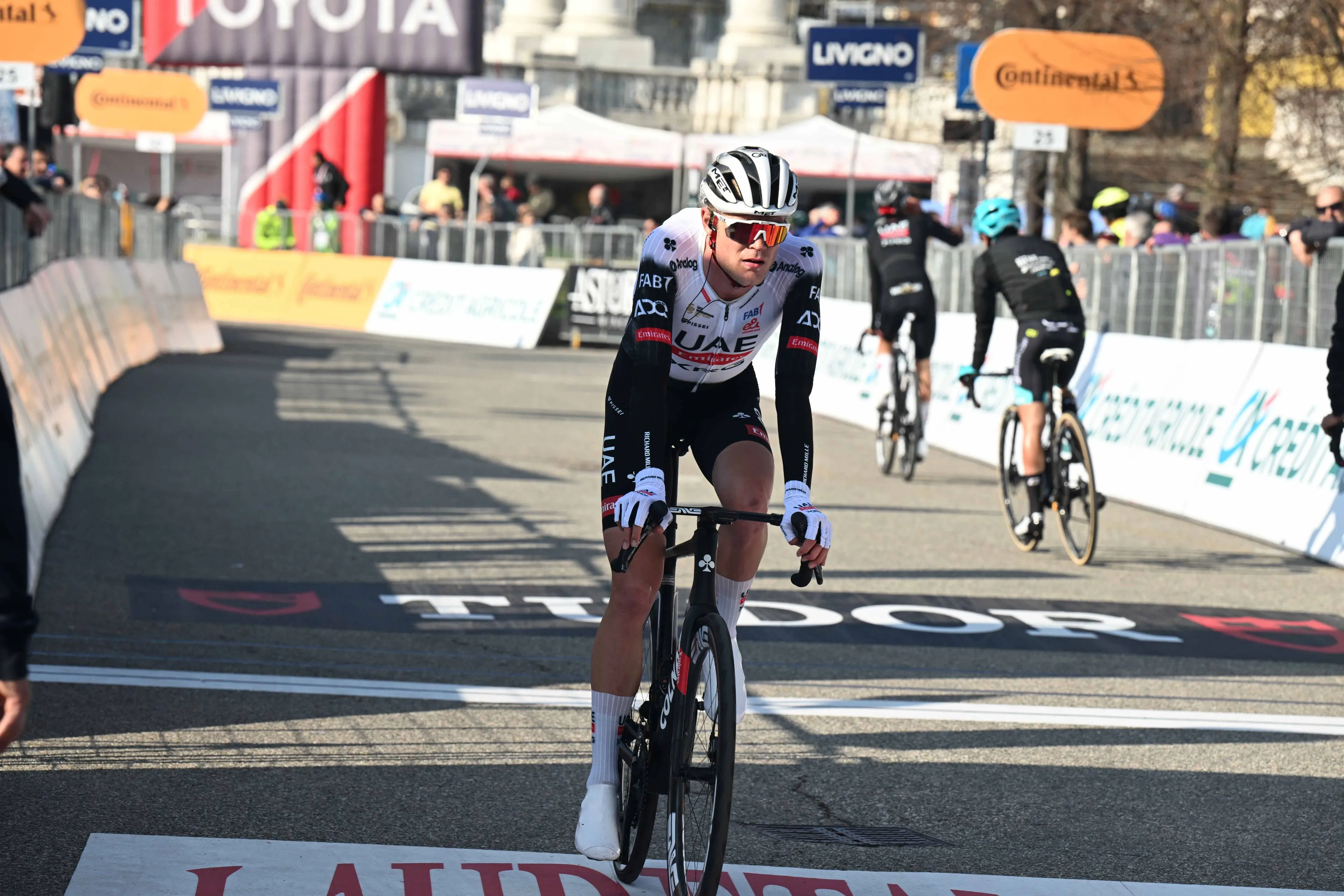Pedal Punditry #3 | Tour de France changes in a split second as Vingegaard, Roglic and Evenepoel suffer injuries; Paris-Roubaix's "chicane-gate" and Nairo Quintana's tough decision
CyclingSaturday, 06 April 2024 at 11:55
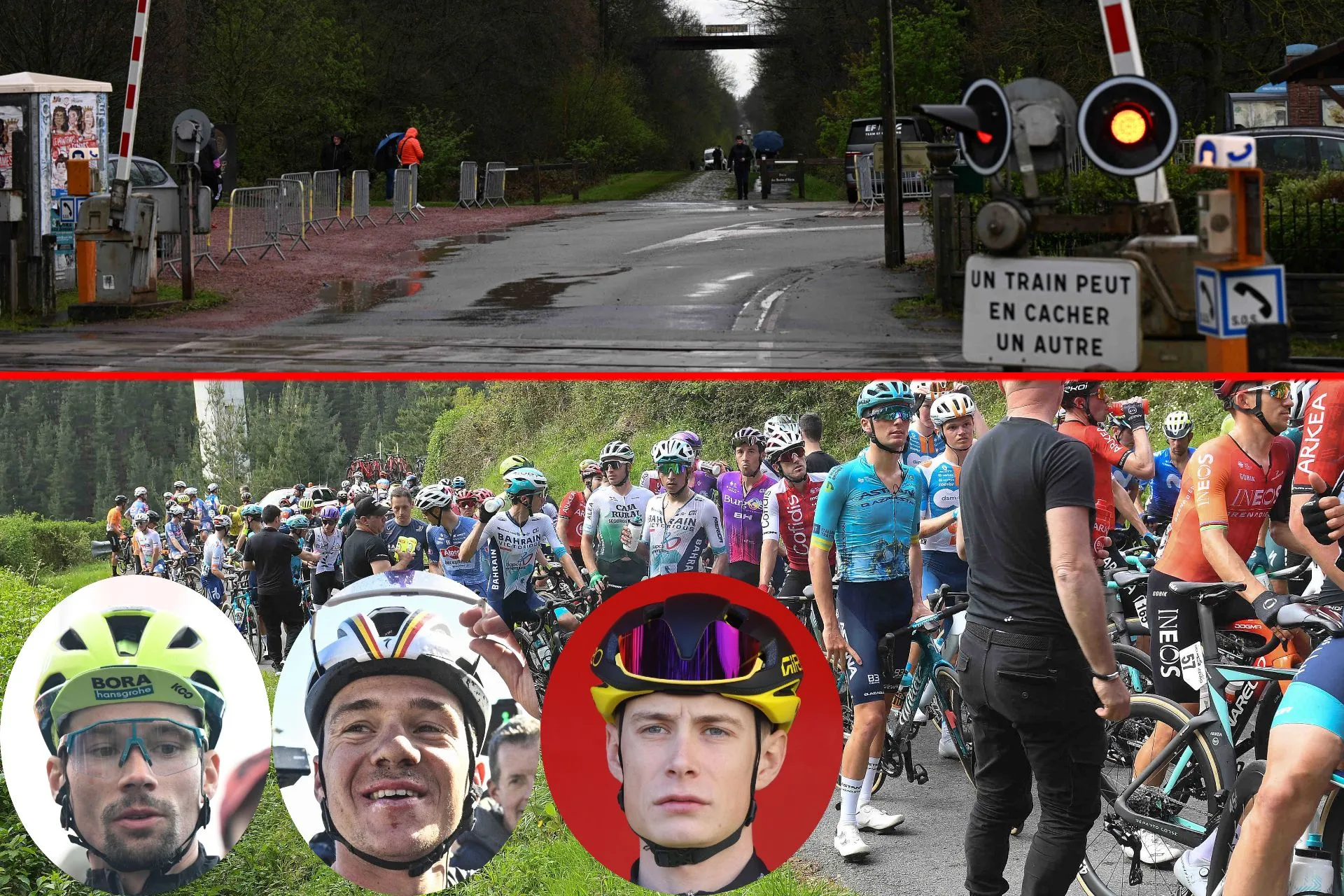
Itzulia Basque Country delivered perhaps the most significant crash of the season as Jonas Vingegaard was carried out in a stretcher; Primoz Roglic and Remco Evenepoel were injured. This is what I think it means ahead of the Tour de France, as well as my thoughts on Paris-Roubaix' "chicane-gate" and how Nairo Quintana has to let go of the Giro d'Italia.
Jonas Vingegaard, Primoz Roglic and Remco Evenepoel crashed hard. The Tour de France has changed in a split second
There's no need to beat around the bush, the main topic of discussion this week (perhaps month and year as well) is how in a split second three of the four Tour de France victory contenders crashed at high-speed during a seemingly innocent descent at Itzulia Basque Country. On the fourth day of racing, the descent of Olaeta, into the final hour of racing, riders found a slight right-hander which had a dark secret. Locals, including Mikel Bizkarra and former pro Joseba Beloki have already talked about how they know this road, and have said what you can't see on TV. There are tree roots under the tarmac, which cause plenty irregularities.
Knowing this, it is possible to see footage of the crash from the leading camera in the peloton, and how Mikel Landa - another local who entered the descent in front for a reason - goes through several bumps on the road. Natnael Tesfatsion crashes, Remco Evenepoel swerves off the road and bunny hops over a ditch... All hell breaks loose. At the same moment that Tesfatsion crashes, so does defending champion Jonas Vingegaard behind. Coming directly from a break in the TV broadcast, it was a shock to see so many riders on the ground - and unfortunately, in a ditch. But to my disbelief, I then hear the names Jonas Vingegaard and Primoz Roglic... Then, the second time I watch the replay I notice Remco Evenepoel's move and then a high-speed tumble onto the dirt. There are little words that can convey how impactful this moment was for the Basque race, but also the Ardennes classics and the Tour de France.
Read also
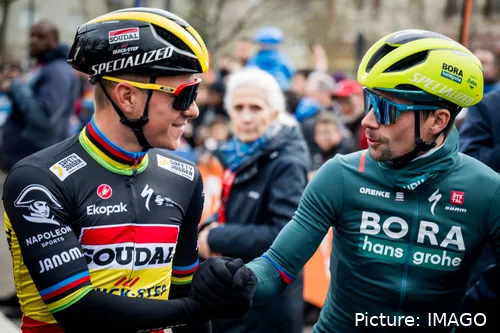
Remco Evenepoel and Primoz Roglic during Paris-Nice 2023. @Sirotti
Helicopter footage showed several riders crashing almost at the same time but in different locations, with no apparent oil on the road. Consequences were catastrophic. Jonas Vingegaard: Broken collarbone and three ribs (although honestly, this was a relief, as TV footage clearly showed him almost motionless for a decent chunk of time, and then being carried off in a stretcher with an oxygen mask); Remco Evenepoel: Broken collarbone and shoulder blade; Jay Vine: Three broken vertebrae; Steff Cras: Two fractured vertebrae; several fractured ribs and a punctured lung. Race leader Primoz Roglic: Abrasions. Maybe the BORA - hansgrohe was "lucky", some would say, but try telling that to a rider who crashed at high speed twice within 24 hours. The list actually does go on, but the point is made.
All three big figures are out of Itzulia. Roglic and Evenepoel will not race the Ardennes anymore (Roglic may, but that's rather uncertain) - giving Tadej Pogacar a clear path for another victory in Liège. Vingegaard's spring was to end here, but not in this way. The Basque race is wide open now, but we think of the future. Very ironically, Vingegaard's next race was scheduled to be the Criterium du Dauphiné, where all three would once again meet. Will they though? Roglic likely will only take a few days off the bike. Evenepoel will take a few weeks but in the space of one month should be back on the bike, and then begin a proper Tour de France build-up. Vingegaard is in the same state as his teammate Wout van Aert with difficult injuries and no date on a return. Do I think he'll race the Dauphiné? Yes, but he is unlikely to follow through with his traditional Tour de France plan including several weeks at altitude, and recon of Tour stages in May. It is possible that he won't race before the Tour so as to focus on training to build his form. Pogacar did that in 2023 under similar circumstances (well he did race the national championships, but he did not race somewhere where he had true competition) and stepped foot on the Tour just fine. Vingegaard races Tour and Vuelta this year if all goes well, he may just take that conservative approach even if he's healthy at the start of June.
Read also

Defending champion Jonas Vingegaard's hopes to defend Itzulia Basque Country end with terrible crash. @Sirotti
Regardless of what he does, this changes his Tour de France build-up almost certainly, as even if everything goes well, he will have less form in May. What happens from there on no-one knows. No-one was happy with this crash, but if anyone had reasons to, it'd be Pogacar himself. After missing the mass crash at Dwars door Vlaanderen as he skipped the cobbles this year, he misses Itzulia and it's mass crashes. His three rivals for the Tour all went down whilst he is at Sierra Nevada, surrounded not by his own teammates funnily but mostly a group of INEOS Grenadiers. He races the Giro, so he has his own battle to try and arrive at the Tour in his best form, but certainly his chances of winning it have improved today. All three riders will have this crash in mind when they descend during the Tour. Roglic's crashing "habits" have not changed after his change of jersey and he will continue to be a wildcard, Vingegaard may no longer want to fly down descents as he's - impressively - done a few times this year; Evenepoel, in my honest opinion, still has to focus on his climbing before realistically challenging for a Tour de France win, the crash doesn't actually change that much for him. But psychologically speaking today three riders took negative hits and one was positively influenced. Besides, all three lose important racing and have not actually battled against each other head-to-head. They may not at the Dauphiné either and if that happens, we go into the Tour knowing less what to expect...
Read also
Is the Arenberg controversy at Paris-Roubaix necessary? No
So the 24 hours before the crash in the Basque Country, social media was flooded with opinions and takes on a particularly interesting topic. Paris-Roubaix organizers, at the request of the CPA (Professional Cyclists' Association), decided to create an artificial chicane before the entrance to the five-star sector of the Trouée d'Arenberg. The chicane could be seen in detail in a video recorded by RAI journalist Stefano Rizzato later that day. "The route will take a chicane just before the entrance to the sector in order to slow the speed at which the riders enter the sector and limit the risk of crashes on the cobbles," race organizers argued. The sector is Roubaix's most iconic one of all, a completely straight line through the forest of Arenberg, over 2 kilometers in length, with some of the most out of place cobbles you'll see just about anywhere. It makes for rough cycling, as it used to be in the "good old days". And I recon that's why a lot of people were critic of this decision.
At the time of writing actually, only 55% out of 161 votes in a poll by CyclingUpToDate believes the change, done in the name of safety, actually improves safety. A whole 45% argue it was a joke. I struggle this a controversy, I barely call it a debate. The change was made as CPA found the majority of riders and team managers were in favour of a change at the entrance of the sector. Why? Being one of the key sectors of the race, and relatively early on as well, it usually sees furious leadout battles which see the riders enter the sector at around 60Km/h, a gruesome sector, where in the past many bloody, bone-breaking crashes have occurred. This happened at the riders' request, the people who will race over this road on Sunday, and that is a key factor that many people purposefully seem to forget when giving their opinion on the topic. I say this because there have been quite some comments on the head of the CPA Adam Hansen, who for some has become "the enemy of cycling". I kid you not.
"Adam Hansen, and everything he represents, is one of the worst things that has happened to cycling," a sports writer with over 15.000 followers on Twitter wrote. "I’ve had team directors say to me that the section should be taken out and we have been talking about possible ways of slowing down dangerous sections because high-speed crashes aren’t good," Hansen himself said in words to GCN. Hansen's decision is a direct result of talks with figures from all over the peloton. A few thousand people who have said or 'liked' words on how Hansen is the enemy of cycling - I've seen this way more than I'd like - are in reality saying that about many of the riders they will then cheer for, and sports director for whom they've cheered on in the past.
That said, I do agree the implementation was not ideal. "Revealing this three days before the race is stupid" some could argue and I wouldn't fight back on that, honestly. But Hansen shared that this was known before the Tour of Flanders amongst the riders and teams, and that two other alternatives right before the sector were not viable either due to holes in the road or the road being too narrow. A decision was made to use a junction right before the start of the sector to create an artificial chicane, so that the riders do not hit the cobbles at frightening speeds, which will prevent gruesome crashes that are not a distant memory. Matteo Jorgenson did a good job reminding this, sharing footage of a crash in 2016 where Mitch Docker, at the time racing for Orica GreenEdge, crashed face first into the cobbles and was covered in blood. This has been the case with others, unfortunately, before and after Docker. "Is this what fans want to see? Riders completely covered in blood after sliding face-first at 50mph/80kph on sharp rocks in a forest?" he wrote.
Read also
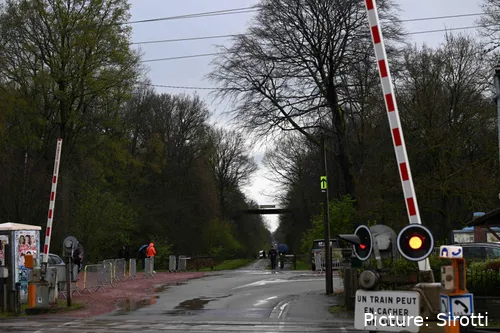
The entrance to Trouée d'Arenberg on the 4th of April. @Sirotti
Some responses can be summed up by a single reply to that Tweet from French writer. David Guénel: "Just stay away from Roubaix". Tradition above everything, and if riders are not happy to take on these cobbles at 60Km/h they are soft. Changing the course to insert small changes for safety reasons 'ruins' the race some claim, whilst the mockery of Hansen's name is now a constant within several circles on social media. Such is the world of sports though, it is not unusual for strong opinions to be present when it comes to choosing sides. Mathieu van der Poel tweeted the words "Is this a joke?" and this gave many people the 'riders did not actually want this' card when that is incorrect. It is not unanimous, that is clear, but the majority does not want.
Often I've also read that this increases chances of crashing. In my own replies someone argued that this "makes a crash a definite". Some people now seem to believe that professional cyclists... Do not know how to break ahead of a corner... In all seriousness, but quite directly, this argument is ridiculous, and virtually none of the criticism present holds up. Sure the riders have the train tracks before the corner which add an element of danger, and a crash may (and I emphasize the word may) happen but it certainly is not likely. All of this argument lies on the belief that riders are uncapable of judging risk and/or handling their bike properly. "It will make the run-in to the sector more nervous" no it will not, the riders now do not have to fear for their lives entering the cobbles and will run less risks. "There will be more risks because the corners adds another nervous section" no it will not, the corner is literally a few meters behind the entrance to the sector, no-one will accelerate thinking of the corner and not the corner/sector as a whole.
Yes it is a sketchy section but do you know what else is sketchy? Riding 55 kilometers of often wet cobbled roads on tires that won't have more than 30 millimeters of width. The corner will not change the beauty of the sector, it will not decide the race and it is certainly not worth a fraction of the controversy that it's been made out to be. Let the cobbles do the talking.
Read also
Nairo Quintana has a choice to make, and Movistar knows it
Lastly we have a topic that has been put in the shadow of crashes and chicanes, which is that Nairo Quintana will not race the Tour of the Alps. "The Movistar Team rider suffers a practically complete rupture of the anterior sternoclavicular ligament in his right arm," the team wrote this Thursday confirming another setback for the Colombian. Quintana's season is going far from ideal in every way, but he is not to blame. Quintana fell ill during the Tour Colombia where he had high hopes of a comeback to the highest level, after having Movistar put their trust back into the rider who in the past has won Grand Tours and came close to winning the Tour de France. He didn't have a good performance in Colombia but shortly after tested positive for Covid-19, justifying this. This saw him delay his trip to Europe where he planned to race O Gran Camiño.
He returned to Europe in March, for the Volta a Catalunya where he didn't have his best form due to his recovery from Covid. With the Giro month and a half away, the Colombian has the pressure to show off good performances so as to regain his team's trust as a leader. That did not happen, but the situation was worst than expected. 18th at Vallter 2000 and 23rd at Port Ainé isn't overly bad actually, but he crashed on the queen stage in the sixth day of racing. Close to the finish, he made the effort to reach Barcelona but he then crashed once again on stage 7, abandoning whilst in the final kilometers of the race. His initial plan to race Itzulia Basque Country was scraped, Quintana has not yet shown results in 2024 and this week more bad news. A different plan was made for him to race the Tour of the Alps - where many Giro contenders traditionally warm up - but that is now also not possible.

Nairo Quintana has not had luck on his side this year, and that is proving very costly. @Sirotti
The Colombian has been diagnosed with an injury in his arm that requires even more resting time. Quintana is currently in Colombia whilst all other Grand Tour figures are either racing Itzulia Basque Country or training at altitude ahead of the Giro. The Movistar rider is in a standstill, even unsure when he can resume racing. Sure enough, Movistar has used the Vuelta a Asturias right before the Giro to give their riders racing rhythm in an environment with little pressure. He could still race there, or perhaps in the Tour de Romandie. The chance of him reaching the Giro in good level is still possible, but not likely.
Racing Romandie does not sound like a good option either as it would only give him two more weeks to train - and well, recover from the injury - but that not racing it means he will 100% reach the Giro without truly competing with other high-level climbers. There's no winning in this situation, but instead limit losses. But in all honesty, I think Quintana and Movistar should end their ideal plan of racing the Giro and instead focus on the Tour-Vuelta double. Movistar will have Fernando Gaviria leading in the sprints whilst Einer Rubio leads the way in the mountains. Rubio is not the ideal GC contender or stage hunter, but he did beat Thibaut Pinot last year to win one, and can certainly do well. Movistar will not work so Quintana would not have much of a role if he is below Rubio, whilst to chase stage wins I feel his compatriot already is in the ideal position. Quintana just does not add much to this lineup, in his current form.
Read also
I do believe that after an unlucky winter and spring, Movistar should already tell him to take it easy, recover from his health issues, and from May onwards begin a serious preparation for the Tour de France. Quintana knows what to do, he's finished on the podium several times in the past and his experience could be key for a good Tour for the Spanish team. There, a stage win would be worth a figurative fortune; but helping an ambitious Enric Mas is also a worthy cause. In a route designed for the climbers, he has opportunities to show himself and he is a veteran in the Grand Boucle. Furthermore, he could race the Tour de Suisse, or possible La Route d'Occitanie in June in search of a result of his own, now ideally with good form.
He has on four different occasions ridden the Vuelta a España in the past, all four after aiming for the GC at the Tour. In 2016 he won the Vuelta ahead of Chris Froome after coming nowhere close to him in France. This is a rider who has shown throughout his career to recover from efforts quite well, often thriving in the final week of Grand Tours, but also doing back-to-back Grand Tours quite well. The Vuelta is relative certain in his schedule as long as he is healthy. I think there's a clear path for Movistar to follow right now and that certainly does not include the Tour de France.
claps 2visitors 2
Just in
Popular news
Latest comments
- Hopefully it's for more money than his previous year. That said, he also knows that 2 even younger riders with a potentially higher ceiling could replace him. So he's still fortunate to be part of a team that wins.Veganpotter16-12-2025
- No mention to their best cyclist? Paul Magnier. Save my words.
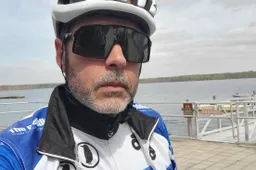 PAULO16-12-2025
PAULO16-12-2025 - Surprising to write an article on future of Soudal and not even mention Paul Magnier who had a superlative year in 2025. Looking forward to seeing him progress in 2026.mobk16-12-2025
- Overall, the level has gone up amongst the top 3 or 4 teams... Except for Ineos, the level has gone down.
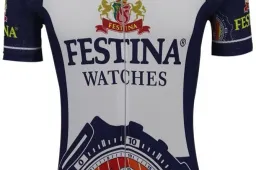 Front24216-12-2025
Front24216-12-2025 - So long as Tadej doesn't turn into a raging Cav or Wiggins, status quo will prevail.Colnago-fan16-12-2025
- The UCI have stated that Carboni's biological passport irregularities were from 2024, when he was riding for JCL Team UKYO. The details matter.
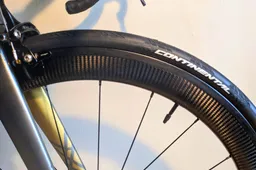 santiagobenites16-12-2025
santiagobenites16-12-2025 - Well, it might sound very arrogant or like a put down. I think his words are pretty accurate and a good assessment on the physique or formOnepiece16-12-2025
- Johansen gets a year and the 'big stars' get big bucks and everything...' Gianetti - hard fkr
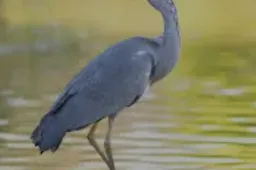 leedorney16-12-2025
leedorney16-12-2025 - Pedersons talent doesn't need to be doubted - he won the world's in Yorkshire in atypical weather for that area and that's a win in itself!
 leedorney16-12-2025
leedorney16-12-2025 - Yeah, it's basically a form of clickbait to make you click on the headline and spend a few seconds reading to find out who it is. That helps with the analytics that advertisers are looking for (i.e. how long readers are spending on the page).Pogboom16-12-2025
Loading
🚨 CAÍDA EN EL PELOTÓN🚨 Entre los caídos, Primoz Roglic, Remco Evenepoel, Quinten Hermans y Jonas Vingegaard 🏆 @bancosabadell 🔴 MORE INFO ⬇️ 🔗 racecenter.itzulia.eus #Itzulia2024
1 Comments

